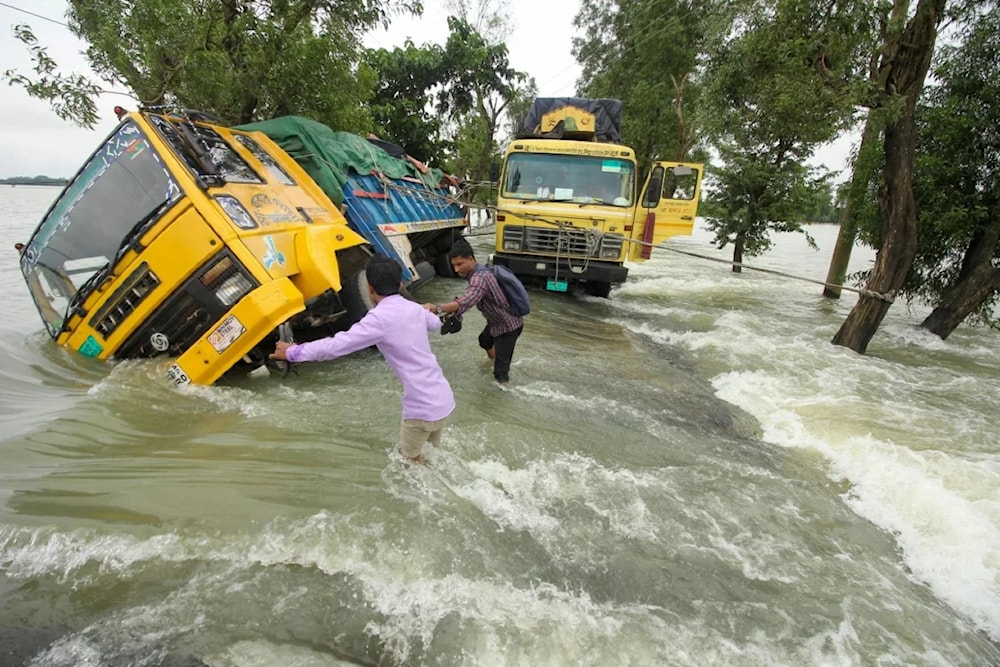Bangladesh floods leave at least 8 dead amid fears situation worsens
Hundreds of shelters opened for displaced people as heavy rains caused rivers to burst their banks.
-

People wade past stranded trucks on a flooded street in Sunamganj, Bangladesh on June 21, 2022. (AFP)
According to an official statement, this week, the death toll from floods in Bangladesh has risen to eight, leaving more than two million affected after heavy rains triggered major rivers to burst their banks.
The country, home to 170 million people, has seen an increase in flooding over recent decades due to the climate crisis, which has led to more heavy rainfall and melting glaciers in the Himalayan mountains.
In the northern rural town of Shahjadur, two teenage boys drowned when a boat capsized in floodwaters, according to police chief Sabuj Rana. "There were nine people in the small boat. Seven swam to safety. The two boys did not know how to swim," he said.
In Kurigram, another police chief, Bishwadeb Roy, reported three deaths from electrocution incidents when boats became entangled with live wires in the floodwaters. Three more fatalities were reported in separate flood-related incidents across the country earlier this week.
Read next: Bangladesh: 3.5 million children without drinking water due to floods
The government has responded by opening hundreds of shelters for displaced people and distributing food and relief supplies to the hardest-hit northern districts.
"More than 2 million people have been affected by the floods, impacting 17 of the country's 64 districts," said Kamrul Hasan, secretary of the disaster management ministry.
He warned that the flood could worsen in the north as the Brahmaputra River, a major waterway in Bangladesh, is flowing above danger levels in some areas. In Kurigram district, eight out of nine rural towns have been submerged, according to local disaster and relief official Abdul Hye.
"In three days, the Brahmaputra rose by 6 to 8 feet (2 to 2.5 meters). Floodwaters have inundated more than 80% of homes in my area. We are trying to deliver food, especially rice and edible oil, but there is a drinking water crisis."
Bangladesh is currently in the midst of the annual summer monsoon, which provides 70-80% of South Asia's annual rainfall but also brings regular flooding and landslides. While rainfall is difficult to predict and varies greatly, scientists say climate change is making the monsoon stronger and more unpredictable.

 2 Min Read
2 Min Read








